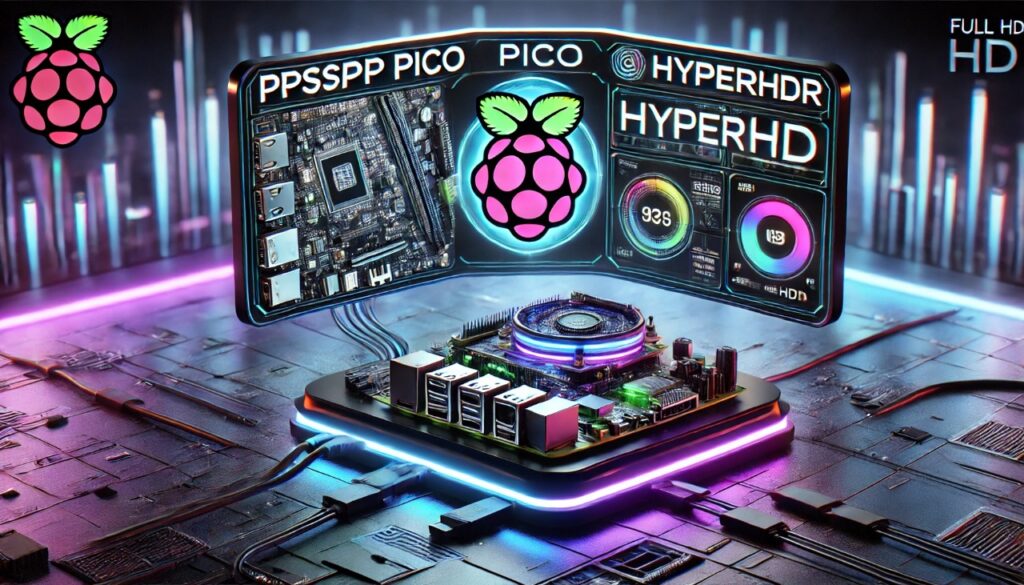Ready to make your gaming even better? If you’re a tech enthusiast who enjoys combining retro gaming with modern lighting setups, you’ve likely stumbled across the terms PPSSPP, Pico wiring, and HyperHDR. But what do they mean, and how do they work together to create a mesmerizing gaming atmosphere? Don’t worry; we’ve got you covered. In this blog, we’ll break down everything you need to know about “PPSSPP Pico Wiring HyperHDR” in simple, beginner-friendly language.
What Is PPSSPP?
PPSSPP is a popular PSP (PlayStation Portable) emulator that allows you to play your favorite PSP games on a variety of devices, including Windows, Android, macOS, and more. Its name stands for “PlayStation Portable Simulator Suitable for Playing Portably.” This emulator is highly regarded for its smooth gameplay, customizable settings, and support for HD resolutions.
Key Features of PPSSPP:
- HD Graphics: Upscale your favorite PSP games to higher resolutions.
- Customizable Controls: Use touchscreen controls or connect external controllers.
- Cross-Platform Compatibility: Works on a range of devices and operating systems.
- Save States: Save your progress anytime, anywhere.
Whether you’re reliving classics like God of War or exploring hidden gems, PPSSPP ensures a seamless gaming experience. But what does it have to do with Pico wiring and HyperHDR? Let’s find out.
What Is Pico Wiring?
Pico wiring refers to the setup of a Raspberry Pi Pico, a tiny microcontroller board that’s perfect for DIY projects. The Raspberry Pi Pico can be used for various applications, from creating custom controllers to enhancing gaming setups with advanced lighting effects.
Why Use a Raspberry Pi Pico?
- Affordable: The Pico is incredibly budget-friendly.
- Versatile: It can handle a wide range of tasks, including LED control and gamepad emulation.
- Compact: Its small size makes it easy to integrate into gaming rigs.
- Easy to Program: Compatible with MicroPython and C++, even beginners can get started quickly.
In the context of PPSSPP and HyperHDR, the Raspberry Pi Pico is often used to control addressable LEDs, enabling dynamic lighting that syncs with your gaming sessions.
What Is HyperHDR?
HyperHDR is an open-source software designed to create immersive ambient lighting. It captures video content from your display and drives addressable LEDs to produce real-time lighting effects that match the action on your screen.
Features of HyperHDR:
- Real-Time Lighting: LEDs change color and intensity based on what’s happening in your game.
- Customizable Profiles: Tailor the lighting effects to suit your preferences.
- Wide Compatibility: Works with a variety of LED types and controllers.
- Open Source: Regular updates and community support ensure excellent performance.
HyperHDR enhances your gaming by making it more visually engaging. Imagine battling in Monster Hunter on PPSSPP while your room lights up in sync with the action – pretty awesome, right?
Bringing It All Together: PPSSPP Pico Wiring HyperHDR
Now that we understand the individual components, let’s dive into how they work together to create the ultimate gaming setup.
Step 1: Install PPSSPP
- Download the PPSSPP emulator from its official website.
- Install it on your preferred device.
- Configure the graphics, controls, and other settings for the best performance.
Step 2: Set Up Raspberry Pi Pico Wiring
To use the Raspberry Pi Pico for lighting control, you’ll need the following:
- A Raspberry Pi Pico board
- Addressable LEDs (e.g., WS2812B or SK6812)
- Micro USB cable
- Soldering kit (optional but recommended)
Wiring Steps:
- Connect the LEDs to the Pico:
- Connect the data pin of the LED strip to the GPIO pin on the Pico.
- Power the LEDs with a 5V power supply.
- Ensure proper grounding between the Pico and the LED strip.
- Program the Pico:
- Install MicroPython or C++ on the Pico.
- Use libraries like Adafruit NeoPixel to control the LEDs.
- Write a script to enable lighting effects that sync with HyperHDR.
Step 3: Configure HyperHDR
- Download HyperHDR from its GitHub repository.
- Install it on your PC or Raspberry Pi.
- Configure it to capture the video output from PPSSPP.
- Set up your LED strip in the HyperHDR interface and test the lighting effects.
Step 4: Sync Everything
- Launch PPSSPP and start a game.
- HyperHDR will capture the game’s visuals and send the data to the Pico.
- The Pico controls the LEDs, creating synchronized lighting effects.
Tips for Optimizing Your Setup
- Use Quality Components: Invest in high-quality LEDs and power supplies to avoid flickering.
- Optimize HyperHDR Settings: Adjust brightness, color profiles, and other parameters for the best results.
- Update Regularly: Keep PPSSPP, HyperHDR, and your Pico firmware up to date.
- Experiment: Try different games and lighting configurations to find what works best for you.
Benefits of Combining PPSSPP, Pico Wiring, and HyperHDR
- Enhanced Immersion: Real-time lighting makes gaming more engaging.
- Customizable Setup: Tailor everything to your preferences.
- Cost-Effective: Build an impressive gaming rig without breaking the bank.
- DIY Satisfaction: Enjoy the thrill of creating something unique.
Conclusion
“PPSSPP Pico Wiring HyperHDR” isn’t just a bunch of buzzwords; it’s a gateway to an incredible gaming experience. By combining the power of PPSSPP’s PSP emulation, the versatility of the Raspberry Pi Pico, and the immersive lighting effects of HyperHDR, you can transform your gaming sessions into unforgettable adventures.
So, why wait? Grab your gear, fire up your favorite PSP game, and let HyperHDR light up your gaming world. Happy gaming!
